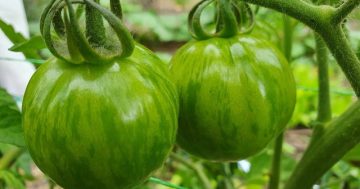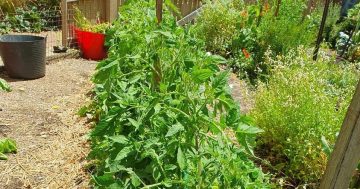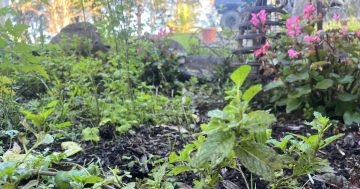 It’s all about the base, ’bout the base, ’bout the base…the garden bed base that is. If you want to grow luscious healthy, strong and abundant vegetables, herbs and flowers, you are going to need good quality soil.
It’s all about the base, ’bout the base, ’bout the base…the garden bed base that is. If you want to grow luscious healthy, strong and abundant vegetables, herbs and flowers, you are going to need good quality soil.
As well as good soils, a vegetable bed needs aeration, sunshine, water and lots and lots of food – if you want to have a continual abundance in plant life.
The soil itself can be made up of different types of sediments: clay, sand, loam or decomposed rock – a combo of all four is the best – lucky you if you have it!
Most of us in Australia have either a clay issue or a sand issue, but you can bring it to life with the following:
- Broken down manure – cow, sheep, chicken, horse, alpaca
- Some sort of organic mulch – like straw, broken down sawdust, seedless cut grass, shredded leaves
- Compost – made at home if possible, the bagged stuff you see in stores isn’t that fantastic, so I’d steer clear of it if possible
- Mineral enhancers – rock dust, potassium sulphate, dolomite
- Moisture – not too wet, not too dry – consistency in moisture is the key
- Worms and other good little helpers for decomposition
You’ll notice I haven’t mentioned commercial fertilisers.
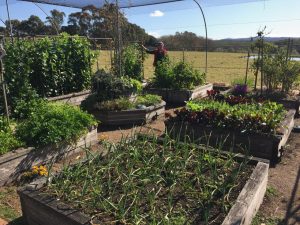 You can use them – blood and bone, pelleted chicken manure with additional minerals, etc, but these are commercial, processed animal products from who knows where and are often advertised as ‘organic’ but that can simply mean that the contents of the bag came from something that was once living.
You can use them – blood and bone, pelleted chicken manure with additional minerals, etc, but these are commercial, processed animal products from who knows where and are often advertised as ‘organic’ but that can simply mean that the contents of the bag came from something that was once living.
You should look for the Australian organic label when buying processed fertiliser and always read the list of ingredients and mineral components on the back of the pack – some products contain elements of heavy metals.
The trick to continual good vege bed health and excellent cropping is regular top-ups as you harvest.
Most people don’t pull everything up in their home gardens at once, it’s usually a continual picking regime for breakfast, lunch and dinner.
As you start to make space in your beds, you want to keep planting – add some more goodies if you can. Remember what you take out in mass (in terms of the size of your veg) you really should put that and a bit more back in as compost, manure and mulch. Aerate with a fork first if needed and then add the goodies.
Remember what you take out in mass (in terms of the size of your veg) you really should put that and a bit more back in as compost, manure and mulch. Aerate with a fork first if needed and then add the goodies.
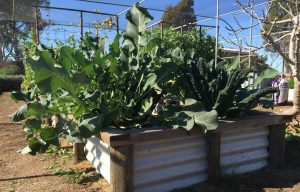 Aerating works better than turning the sod over – biologists have discovered different microbes and small invertebrates live at different levels in the soil profile. Turning the sod means they are in the wrong place and can die, leaving your soil without little helpers for breaking down nutrients for the plants to eat.
Aerating works better than turning the sod over – biologists have discovered different microbes and small invertebrates live at different levels in the soil profile. Turning the sod means they are in the wrong place and can die, leaving your soil without little helpers for breaking down nutrients for the plants to eat.
I also suggest that you don’t put the same type of plant back into the same spot, a practice that helps to reduce the risk of disease. Follow a root crop with a leafy crop, follow a leafy crop with a heading crop, follow a heading crop with a vine crop. For instance, carrot then lettuce then broccoli then pea. All while keeping an eye on the seasons and what works best when!
I started off my vegetable garden with the no-dig method, mainly because my soils are clay-based and were rock-hard. From that start I have just kept up the layering, adding more and more good stuff and 4 years later I have a bed that sits around 15cms above the path. Fifteen to 20cms is a good depth for most vegetables.
Next bit is – should I go seedlings or seeds?
There are guidelines on most packaged seed. Root crops do better when sown direct into your bed, so do corn, peas, beans and cucumbers. Other seeds should be sprouted and raised in boxes or pots before planting out. Getting tomatoes off to a good start in a greenhouse or glass-lidded box is a good idea and some people start them off as early as June or July ready to be planted out when the frost has (finally) gone.
You could be like me and not worry about it and just chuck stuff (seeds) around randomly and hope for the best – it’s haphazard, works 70% – 90% of the time, and it does confuse the pests a bit too.
You can let plants self-seed and run wild through your garden, but sometimes you run the risk of inbreeding, stunted growth and bitter tasting veg as the plant returns to a wilder form.
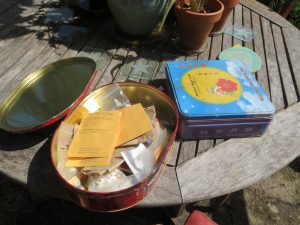 I save the healthiest, slow to bolt plants for seed. Remember though that the one lettuce head can produce 60,000 seeds, yes you read right 60,000! Non-hybrid and heirloom plants are the best to collect seeds from.
I save the healthiest, slow to bolt plants for seed. Remember though that the one lettuce head can produce 60,000 seeds, yes you read right 60,000! Non-hybrid and heirloom plants are the best to collect seeds from.
Seedlings raised at home are generally strong and healthy. Commercially grown plants are often forced into growth to look good for the consumer and have little resistance to pests and disease.
Locally grown seedlings from your farmers market are generally better quality than from a supermarket or hardware store.
I always follow a planting out of seedlings with seaweed concentrate or worm juice, just to give the plants a feed to get over the shock of transplant. If a plant looks poorly, I will follow-up with regular liquid feeds every few days, till I see an improvement – if it doesn’t improve after 2 weeks, pull it out and start again.
Watering consistently will also help in vegetable abundance – early morning or late afternoons are the best times through the warmer months.
Splitting fruit and bolting to seed are an indicator that you are not watering regularly enough. Never be cuaght out with the notion that just because it has rained your vege garden will be okay – you should check the soil after rain to see just how far the rain penetrated.
Happy spring planting!







